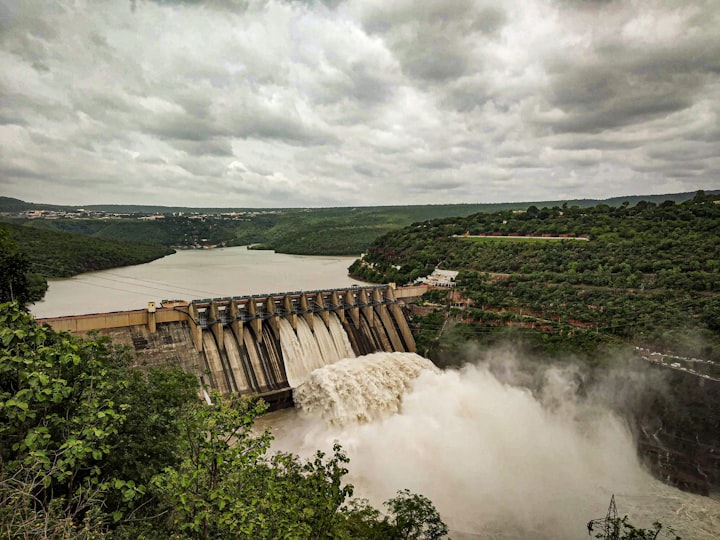
Dams have long been recognized as marvels of engineering, utilizing the raw power of water to generate electricity, regulate river flow, and provide numerous societal benefits.

These impressive structures have shaped landscapes, bolstered economies, and facilitated human development in countless regions around the world. From the ancient civilizations of Egypt and Mesopotamia to the modern wonders like the Three Gorges Dam in China, dams continue to play a vital role in our pursuit of sustainable energy and water management. This article delves into the significance, functioning, and environmental impact of dams, exploring both their advantages and potential drawbacks.
The Importance of Dams:
Dams serve multiple purposes that are vital for human societies:
Hydropower Generation:
One of the primary benefits of dams is their capacity to produce electricity through hydropower. As water flows through turbines, it drives generators, converting the energy of flowing or falling water into electrical power. Hydropower is a clean and renewable energy source that reduces greenhouse gas emissions and decreases reliance on fossil fuels.
Flood Control and Water Storage:
Dams provide effective flood control measures by regulating river flows during periods of heavy rainfall or snowmelt. By storing excess water in reservoirs, dams can prevent catastrophic flooding downstream, safeguarding communities and their infrastructure.
Moreover, these reservoirs serve as valuable water sources during dry seasons, ensuring a reliable water supply for drinking, agriculture, and industrial use.
Irrigation and Agriculture:
Dams play a pivotal role in agricultural development by supplying water for irrigation. Large-scale irrigation projects, made possible by dams, enable farmers to cultivate crops in arid or semi-arid regions, boosting food production and rural economies. Such projects have proven crucial in supporting growing populations and ensuring food security.

Navigation and Transportation:
Dams often include locks that facilitate the passage of ships and boats, creating navigable waterways where none existed before. These artificial water routes enhance transportation, trade, and tourism, connecting previously isolated regions and fostering economic growth.
Environmental Considerations:
While dams offer numerous advantages, they are not without their environmental consequences. It is crucial to carefully assess and mitigate the impact of dam construction and operation:
Habitat Alteration:
The creation of reservoirs behind dams can lead to the inundation of large areas, resulting in the loss of natural habitats, including forests, wetlands, and wildlife habitats. The alteration of river ecosystems can disrupt migratory patterns, reduce biodiversity, and affect fish populations.
Sediment Accumulation:
Dams can hinder the natural flow of sediment downstream. Over time, this can lead to sediment accumulation in the reservoir, reducing its storage capacity and impacting the downstream environment. Sediment flow is a crucial element in maintaining healthy river ecosystems and supporting coastal land formations.
Methane Emissions:
Reservoirs formed by dams can produce greenhouse gases, including methane, through the decomposition of submerged organic matter. Methane is a potent greenhouse gas that contributes to climate change. However, newer dam designs and management practices aim to minimize these emissions.
Socioeconomic Impacts:
The construction of large dams often involves the displacement of communities and loss of cultural heritage. Resettlement and relocation of affected populations can lead to social disruption, economic challenges, and cultural erosion. It is vital to prioritize fair compensation, consultation, and the preservation of cultural sites when planning dam projects.
Environmental and Social Impact Mitigation:
Recognizing the potential drawbacks of dams, efforts are underway to minimize their negative effects and promote sustainability:
Environmental Mitigation:
Environmental impact assessments and careful planning are essential before constructing a dam. Implementing fish ladders or fish passes can enable fish migration, maintaining aquatic biodiversity. Sediment management strategies, such as controlled releases, flushing flows, or sediment bypass tunnels, help maintain downstream sediment flow and mitigate erosion.
Additionally, reforestation and habitat restoration programs can offset the loss of natural habitats caused by dam construction.
Sustainable Operation:
Modern dam designs incorporate more environmentally friendly features. For example, run-of-river hydropower projects minimize reservoirs, allowing rivers to flow more naturally. Moreover, innovative turbine designs reduce fish mortality by preventing them from entering the turbines.
Social Considerations:
Recognizing the social impacts of dam construction, inclusive stakeholder engagement and community involvement are crucial. Affected communities should be consulted and adequately compensated, ensuring their voices are heard, and their well-being is prioritized. Resettlement plans should provide displaced populations with suitable alternatives, access to basic amenities, and opportunities for economic development.
Alternatives and Efficiency:
It is important to explore alternative methods of energy generation and water management. Investing in renewable energy technologies, such as solar and wind power, can diversify the energy mix and reduce the reliance on dams. Additionally, improving water efficiency in agriculture, industry, and urban areas can reduce the need for extensive irrigation and reservoir storage.
Dams have undeniably transformed landscapes, harnessed water's power, and provided a multitude of benefits to societies worldwide. From energy generation to water management, irrigation to flood control, dams have played a crucial role in advancing human civilization. However, it is imperative to strike a balance between the advantages they offer and the potential environmental and social impacts they can, by prioritizing comprehensive impact assessments, stakeholder engagement, and sustainable operation, we can harness the benefits of dams while minimizing their ecological footprint. Balancing the economic, social, and environmental aspects of dams will be essential as we strive for a future where human development and environmental stewardship go hand in hand.





Comments
There are no comments for this story
Be the first to respond and start the conversation.